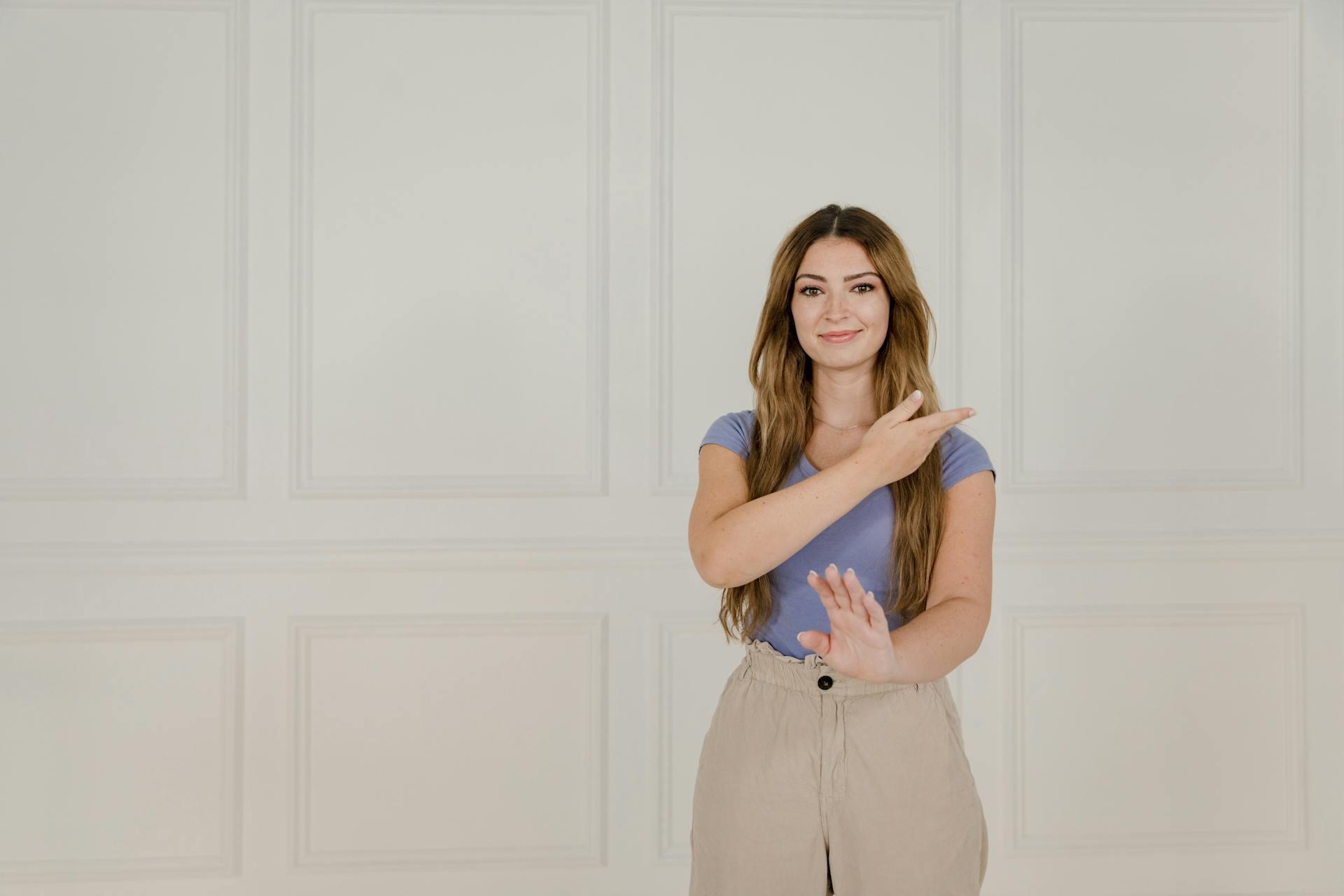American Sign Language (ASL) is a visual language used by Deaf and hard-of-hearing communities in the United States and parts of Canada. It is also recognised in several other countries due to its influence in Deaf education. ASL is a language in its own right with its own rules, grammar and expressive forms using hand movements, facial expressions and body language.
The important thing is not to stop questioning. Curiosity has its own reason for existing.
Albert Einstein, as quoted in Life Magazine, May 2, 1955

What Is American Sign Language
American Sign Language, or otherwise known as ASL, is the main language used by many Deaf individuals. It is not a version of English put into hand signs. ASL has a different grammar structure and vocabulary that is based on visual-spatial expression rather than sound. For example, questions are shown through facial cues and the direction a sign moves can change the meaning of a sentence.

While ASL is most common in the U.S., it is also commonly used in parts of English-speaking Canada and has influenced sign languages in places like Ghana, Jamaica and the Philippines. These adaptations often blend ASL with local signs depending on how Deaf education developed in each region.
An estimated 250,000 to 500,000 people use American Sign Language (ASL) as their primary language in the United States and parts of Canada. This includes Deaf individuals, children of Deaf adults (CODAs), interpreters and others who use ASL daily in education, work, or community life. While exact numbers vary by source, ASL is recognised as one of the most commonly used languages in North America!
History and Development of ASL: When was American Sign Language Invented ?
Early 1800s
Deaf communities in the U.S. use home signs and regional gestures
1817
American School for the Deaf was founded in Hartford, Connecticut
Laurent Clerc (from France) and Thomas Gallaudet introduced French Sign Language (LSF)
1820s–1880s
ASL begins to form from LSF, home signs and Martha’s Vineyard Sign Language
1960
Linguist William Stokoe publishes research proving ASL is a real language
Today
ASL is used by hundreds of thousands in the U.S. and globally
ASL began in the early 1800s in the United States. It developed when a Deaf French teacher named Laurent Clerc came to the U.S. with Dr. Thomas Gallaudet. Together, they opened the American School for the Deaf in 1817 in Connecticut. At the school, students brought home signs and regional gestures that combined with French Sign Language. Over tim,e this mixture formed the base of what we now call ASL.
The language continued to grow within schools, clubs and communities. In the 1960s, a linguist named William Stokoe published research showing that ASL had all the traits of a real language. His work helped change public and academic views. He also created one of the first dictionaries of ASL. Earlier advocates like George Veditz also played a role in preserving ASL. He used film in the early 1900s to record and protect the language. His famous 1913 speech, "Preservation of the Sign Language", is now a valuable part of Deaf history.
Are you curious to learn the differences between British Sign Language and ASL?
Structure and Grammar of ASL
ASL uses visual space and movement to form grammar and structure. The order of words often follows a topic-comment format instead of subject-verb-object, like in English. For example, “Store I go” would be a natural ASL sentence meaning “I am going to the store.” Non-manual signals like raised eyebrows, head tilts, and mouth movements are a key part of ASL. These add tone and meaning to the signs. ASL also uses classifiers, which are specific handshapes that stand in for objects or people. These help build more detailed descriptions without needing extra words.

Fingerspelling is also important in ASL. While not used all the time, fingerspelling is useful when no standard sign exists for a word. ASL has regional variations. Some signs are used in one part of the country and not in others.
Fingerspelling uses 26 handshapes to spell words like names or technical terms.
Common Signs in ASL: Conversational Basic Sign Language
Before diving into complex grammar and structure, it helps to start with everyday signs. These are the ones people use most often in casual conversation, at home or in simple introductions. Learning these first builds a foundation for further progress. If you're just starting out with ASL, these are some everyday signs to learn:
- Hello – Flat hand moves outward from the forehead
- Thank you – Hand touches the chin then moves forward
- Please – Flat hand circles on the chest
- Sorry – A closed fist circles on the chest
- Yes – Fist moves up and down like a nod
- No – Index and middle fingers tap together
- Help – Thumbs-up hand on top of the other hand, then lifted slightly
- I love you – A combination of the letters I L and Y held up
- Eat / Food – Fingers touch the mouth
- Family – Two F-shaped hands circle outward together
These basic signs are helpful for beginners and are often among the first taught in ASL classes. They allow people to greet others, express needs, and show politeness. As learners become more confident, they can combine these signs into full sentences and begin picking up grammatical structures.
Practising with Deaf individuals or fluent signers helps reinforce proper form and expression. Repetition is key. It’s common to practice each sign daily until it feels natural. Eventually, these words become a part of your regular communication tools, whether you're chatting with a Deaf friend or just adding more visual language to your day-to-day interactions.
Would you like to learn Australian Sign Language next?

Why Does ASL Matter
ASL isn’t just important for communication. It touches health, education, culture and family life. Understanding its value helps society support more inclusive environments and give Deaf people full access to the world around them. It also matters in emergency situations where clear fast communication is needed.
Sign language is not a substitute for spoken language, but a full and complex language in its own right, essential for equal participation in society.
World Federation of the Deaf
Without qualified interpreters or access to ASL, Deaf individuals can miss important details about their rights, safety, or well-being. ASL makes sure information is shared equally and accurately. In personal relationships, it helps build trust and connection. Learning and using ASL even at a basic level signals respect. It tells people in the Deaf community that their language matters and their voice is heard. In this way ASL is more than a tool it’s a bridge to inclusion equality and dignity.
Where Is ASL Used
ASL is not limited to classrooms or medical settings. It appears in more places than people often realize from TV screens to social events. Knowing where it’s used can help promote wider awareness and accessibility. Technology has also expanded where ASL shows up. Video relay services allow Deaf people to make phone calls using interpreters. Some apps offer live sign translation or video chat options in ASL.

Many Deaf influencers share their lives on platforms like TikTok and Instagram, giving ASL a larger audience than ever before. Public service announcements and campaigns increasingly include ASL to reach broader communities. From political debates to religious services the use of ASL reflects a growing shift toward inclusion. Here is a famous influencer on YouTube today!
Have you ever heard of Irish Sign Language classes?
A Common Misunderstanding in ASL
People who are new to ASL or unfamiliar with the Deaf community may carry certain misconceptions. Clarifying what ASL is helps reduce bias and encourages more accurate understanding. One common misconception is that learning ASL is easy or only takes a few weeks. Like any languag,e it requires time, practice and real interactions!
Facial expressions are a critical part of grammar and not just emotion. Misunderstandings can create barriers even when well-meaning people want to help. Being informed, listening to Deaf voices and checking assumptions are the best ways to support respectful and clear communication!
Learning ASL
Learning ASL opens up communication with millions of people and builds cross-cultural understanding. Whether you’re learning for work, family, or curiosity, it’s important to approach it with patience and respect. Start small with the alphabet and basic signs, then grow your skills step by step. It’s useful to set realistic goals like learning ten new signs a week or holding short conversations.
Practising with a Deaf person or joining a local ASL meetup will accelerate your learning. Remember, mistakes are normal, what matters is showing effort and a willingness to improve. Watching signed stories or films can also help with comprehension and rhythm. It's important to note, that language is more than words it’s culture too. When you learn ASL you’re also learning about the people who use it every day!
The Future of ASL
ASL continues to grow, more schools are offering it as a foreign language and more interpreters are becoming certified. Additionally, platforms are now offering content in ASL, but challenges remain! Many Deaf children still grow up without early access to sign language and not all public spaces provide trained interpreters. Research and advocacy work are helping push for better inclusion and legal recognition.

Learn ASL with Superprof
ASL is a full language shaped by people not systems. For many Deaf individuals it is their first language and their cultural link, as for others it is a second language that opens new doors. Whether you're learning ASL for work school or personal growth you are stepping into a meaningful and living form of communication!
Learning ASL with Superprof is a practical way to get started or improve at your own pace. You can find tutors who work with your schedule and learning style whether you prefer meeting in person or online. Many of the teachers have real experience using ASL every day and can help you build confidence through regular practice! Lessons are often one-on-one so you get feedback as you go and can ask questions without pressure. Whether you're learning to communicate with your family, for work, or for your personal interest, Superprof gives you the chance to learn sign language in a way that feels clear comfortable and useful!















